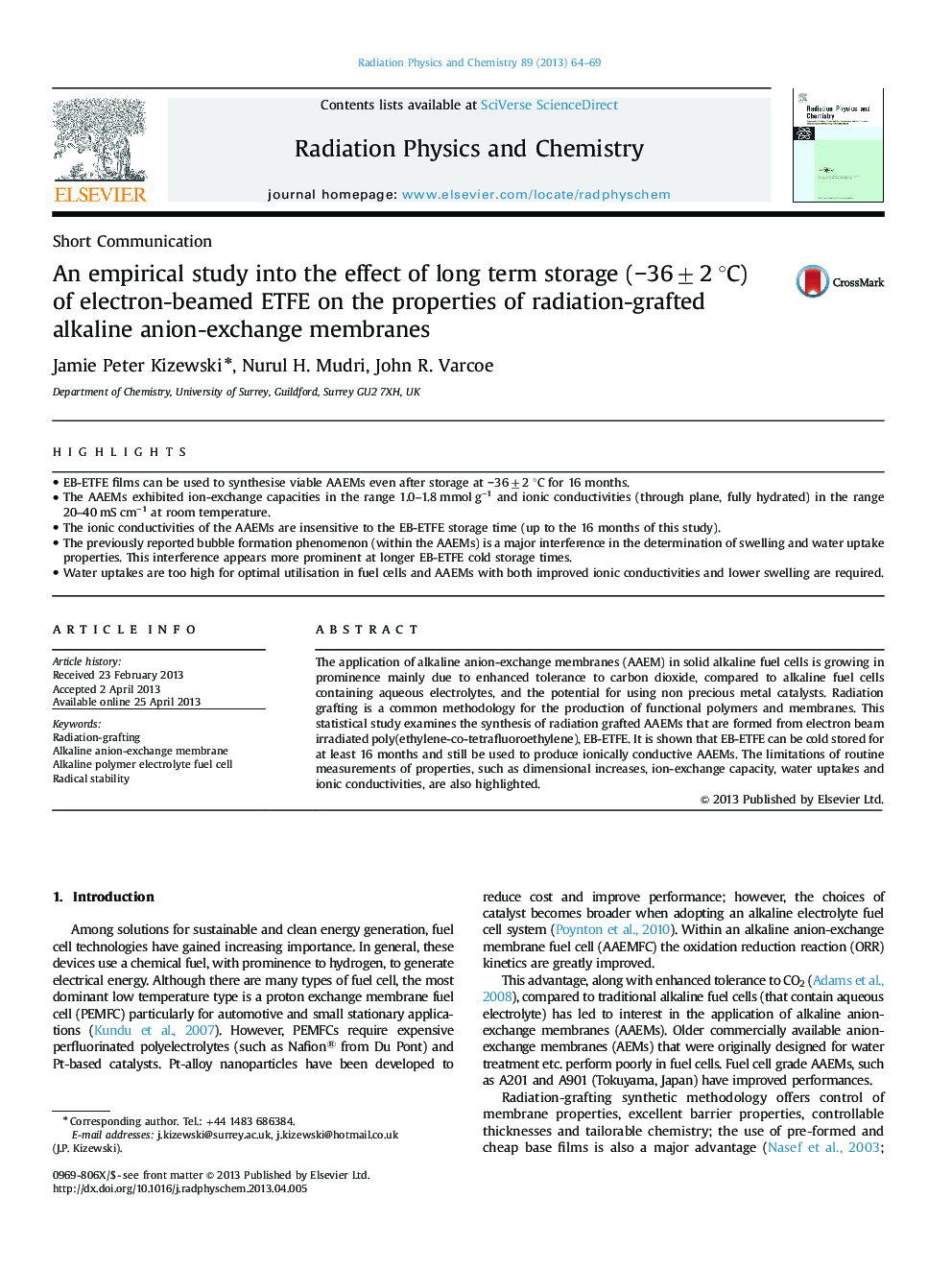| Article ID | Journal | Published Year | Pages | File Type |
|---|---|---|---|---|
| 1891492 | Radiation Physics and Chemistry | 2013 | 6 Pages |
•EB-ETFE films can be used to synthesise viable AAEMs even after storage at −36±2 °C for 16 months.•The AAEMs exhibited ion-exchange capacities in the range 1.0–1.8 mmol g−1 and ionic conductivities (through plane, fully hydrated) in the range 20–40 mS cm−1 at room temperature.•The ionic conductivities of the AAEMs are insensitive to the EB-ETFE storage time (up to the 16 months of this study).•The previously reported bubble formation phenomenon (within the AAEMs) is a major interference in the determination of swelling and water uptake properties. This interference appears more prominent at longer EB-ETFE cold storage times.•Water uptakes are too high for optimal utilisation in fuel cells and AAEMs with both improved ionic conductivities and lower swelling are required.
The application of alkaline anion-exchange membranes (AAEM) in solid alkaline fuel cells is growing in prominence mainly due to enhanced tolerance to carbon dioxide, compared to alkaline fuel cells containing aqueous electrolytes, and the potential for using non precious metal catalysts. Radiation grafting is a common methodology for the production of functional polymers and membranes. This statistical study examines the synthesis of radiation grafted AAEMs that are formed from electron beam irradiated poly(ethylene-co-tetrafluoroethylene), EB-ETFE. It is shown that EB-ETFE can be cold stored for at least 16 months and still be used to produce ionically conductive AAEMs. The limitations of routine measurements of properties, such as dimensional increases, ion-exchange capacity, water uptakes and ionic conductivities, are also highlighted.
